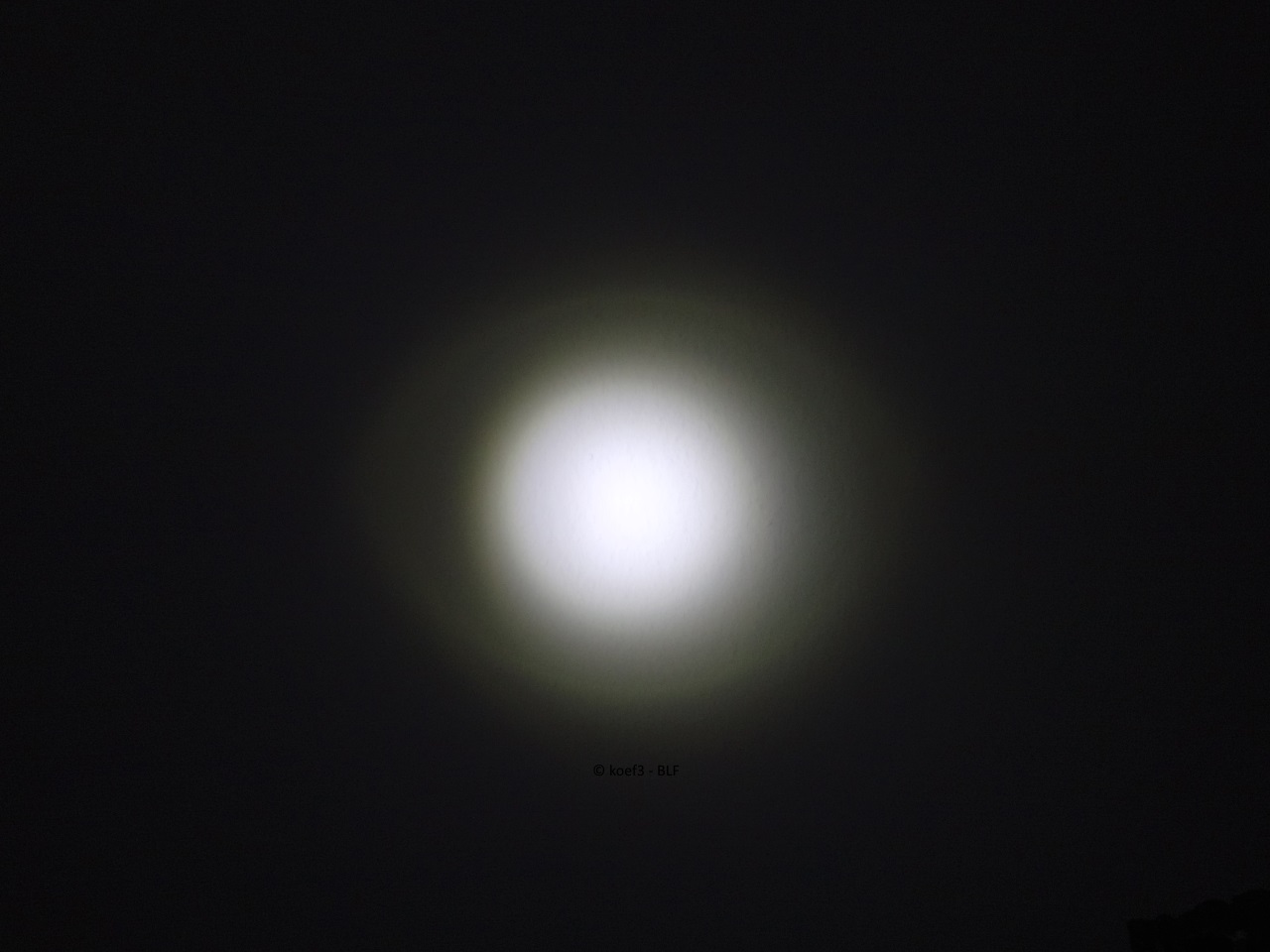LED test / review
EN
Osram Ostar Projection Compact LE UW Q8WP
UPDATE --- 06/21/18 --- diagram Vf / light flux depending on Tj added!
UPDATE --- 06/23/18 --- raw data added! (link)
A longer time ago I got an Osram Ostar Projection Compact LE UQ Q8WP. This LED looks very interesting for luminance and maximum light flux, which could possibly beat also the good old XP-G2 S4 2B in luminance.
Technical data
Tj 25 °C / If 1,400 mA unless noted otherwise
Order code: unknown
Type: single die (lateral)
Binning: unknown
Rated voltage: min. 2.80 V, max. 3.50 V
Forward current: 40 to 5,000 mA
Peak forward current: 40 to 6,000 mA
Viewing angle: typ. 130° (at 50 % Iv)
Thermal resistance: typ. 2.6 °C/W (max 3.6)
Junction temp.: max. 150 °C
The official datasheet can be found here (download starting by click on link, offficial Osram website, pdf)
The Q8WP was developed for projection /stage applications, mostly for beamer and stage or entertainment lighting. I got this sample from a member of the german forum a longer time ago.



It features a glass window on top, against many other LEDs which are equipped with silicon domes or protective coatings. This makes the Q8WP very sensitive against damage in case of falls or mishandling. For that the LED can be easily cleaned and is also less sensistive to soldering flux.
Because of the not symmetric shape the use of center rings made with lathe is not recommended, also the die is not centered on the LED package which could make the precise centering of the reflector more difficult.
The Q8WP fits on a XP Noctigon MCPCB you can see in the previous pictures.
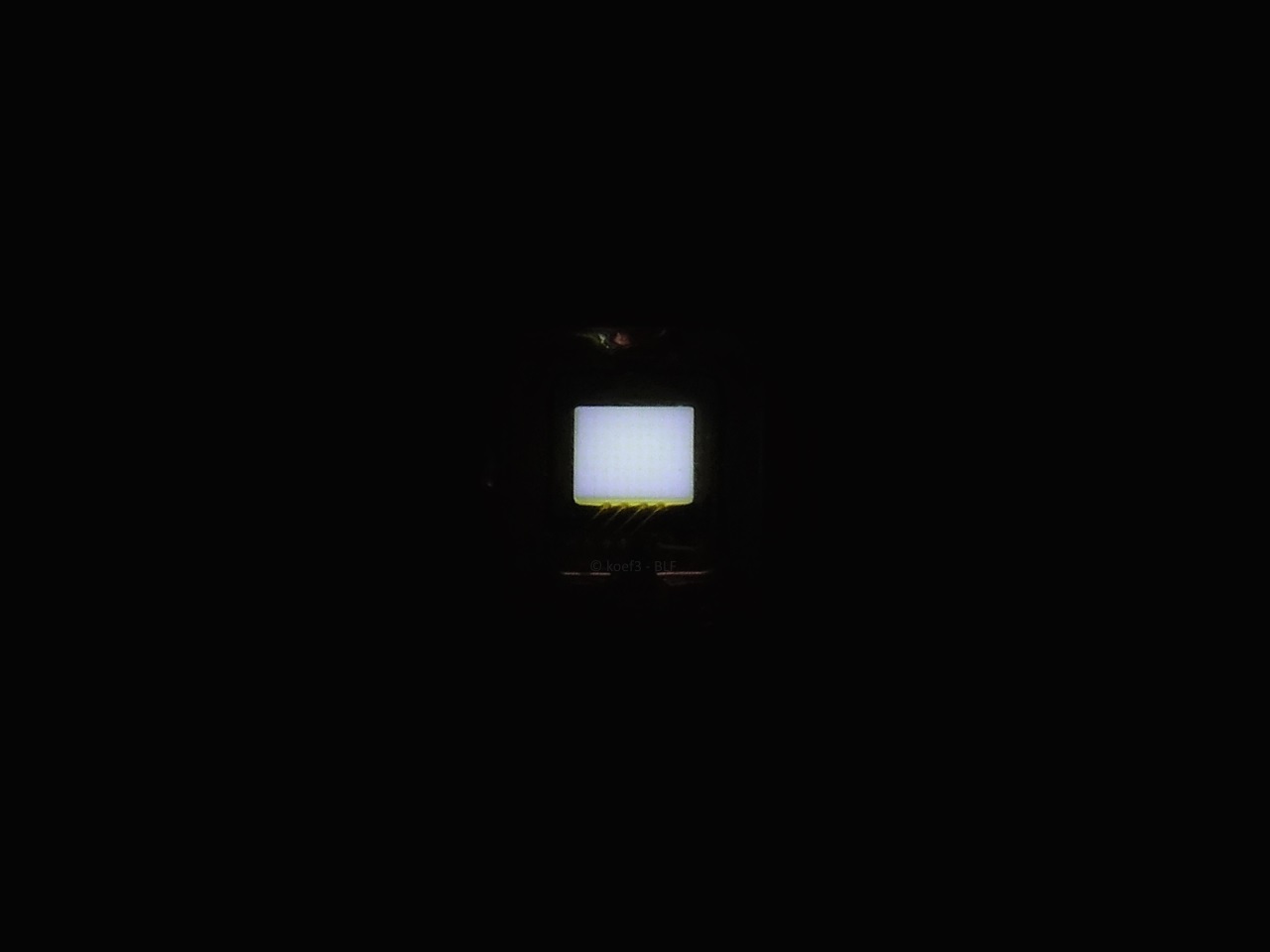
The die is connected with four bonding wires. At the bonding pad edges there are yellow-colored surfaces, which is known from many newer LEDs, especially that one in Flip Chip design. So I decided to look further to check if light is emitted sideways.


And indeed it is true, the sides are also lit up which can be seen in the both pictures above. From top view the side light isn't reflected by the substrate really well, but it is visible. But this means also that the real LES is a lot bigger than stated in the package outline shown in the datasheet in which the die is 1.55 x 1.23 mm in size, but only in top view.
In the official datasheet the ‚radiating surface‘ is given as 1.8 mm², which is true. But apparently this is valid for the one only visible from above, not for the light emitting sides.
Performance
25 °C Tsp, unless noted otherwise.
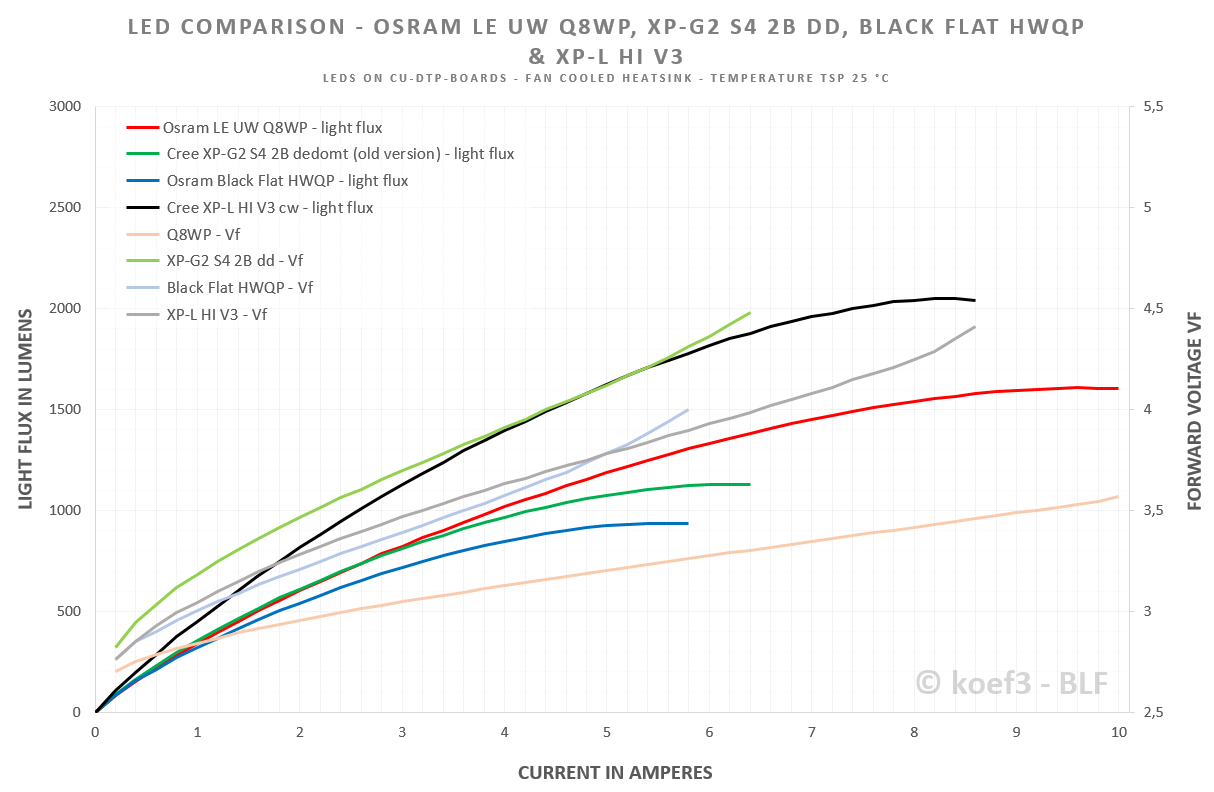
raw data here
The Q8WP (red graph) is not the most efficient LED. The XP-L HI is a lot more efficient and delivers higher light flux. For this the Vf is fairly low, at the current maximum of 9,600 mA it reaches only 3.53 Volts, at 1607.4 Lumens (33.9 Watts).
It delivers lot more light than Black Flat and dedomed XP-G2 S4 2B (old version, the good one).
At binning conditions (25 °C Tsp, 1,400 mA) it delivers 451.2 Lumens, so it equals to the Osram flux bin PA (450 to 560 lm).
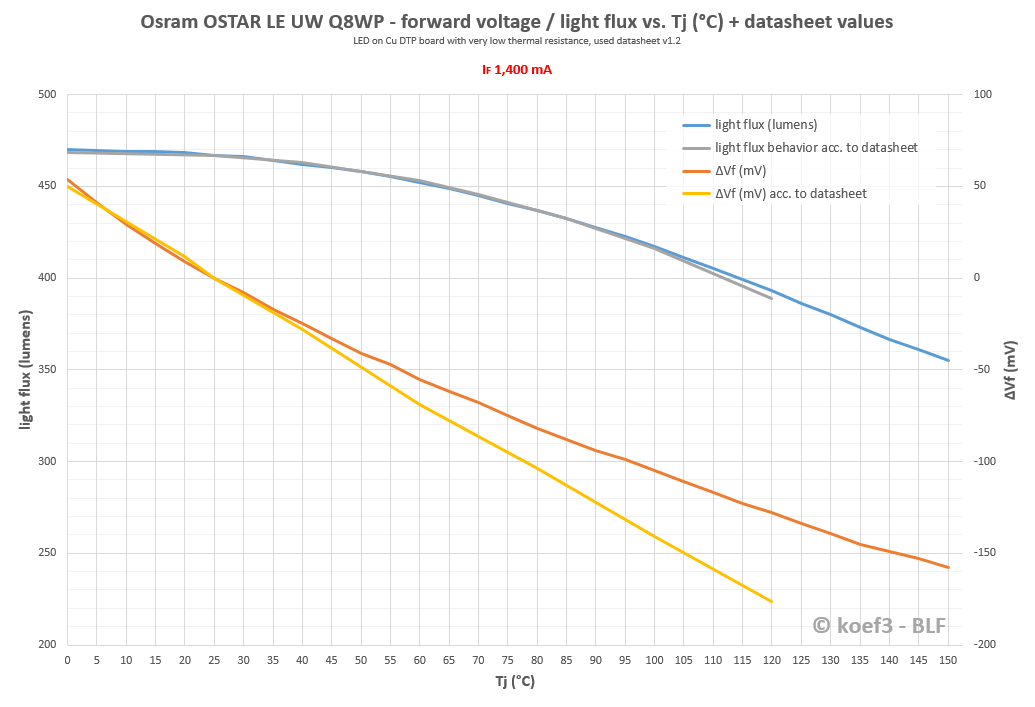
The higher the Tj and therefore Tsp, the higher is the loss in light flux. From 25 to 125 °C, the difference is at least -18 %.
The Vf decreases in this range by about 130 mV.
Luminance
I established a new method for determining luminance, especially to ensure more realistic values for 'real-life' conditions (flashlight use). The measurements are taken with a new original Convoy C8 reflector, but with same heatsink / setup as previously used in flux measurement.
Reflectivity for reflector 85 %
Transmission UCL glass 97,8 %
Values at 25 °C Tsp, for 85 °C Tsp values are 6 to 14 percent lower, depending on LED
LEDs marked with Warning sign uses old values are still taken with previous method (determining die size) due to problematic light distribution (donut holes etc).
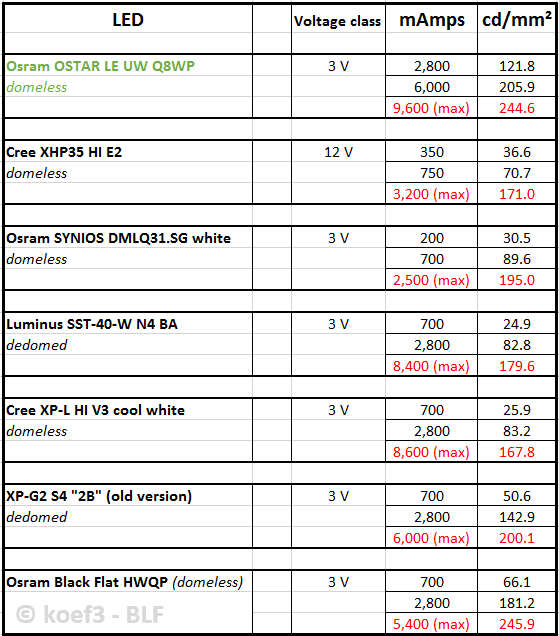
The luminance of the Q8WP is extremely high. In general the Q8WP is the 'Black flat with higher light flux', I suppose the Q8WP is built on the same LED chip technology used in Black Flat and maybe SYNIOS. The side LES do not seem to influence the results. The unsymmetrical LES still remains.
The light color is a little bit blueish white, but without green or yellow parts in it. I estimate the CCT at approx. 7500 to 8000 K, the color rendition is low which is normal for cool white light sources in this color (rendering) class.
Conclusion
Again I had to revoke my conclusion for this LED. After the new luminance measurements it is clear that the Q8WP is very powerful, even in luminance. It delivers a lot more flux, at same luminance.
The efficiency is not as high as of other emitters, but there might some higher binned samples available on the market.
I like the low Vf, which allows a good regulation with linear drivers. Also the beam pattern is not bad, there are no miscolored coronas if used in conjunction with SMO or OP reflectors. The rectangular area could be a problem for aspherical optics / lights, though.
Pro
- Low Vf
- High max current
- Extremely high luminance, like Black Flat
Neutral
- Tint a bit blueish
- Glass window on the which makes the LED more sensitive but also makes cleaning more easy
- Bigger (total) LES than stated in official datasheet because of side emitting areas
Con
- Relatively inefficient
- Unsymmetric shape makes centering more difficult
Thanks a lot for reading! :)
Greetings, Dominik (aka BLF member koef3)
Mistakes, suggestions or offers / sponsoring of LEDs which I should test next are best sent via PM.
